- Published on
Svix Update December 2021 - Part 1
- Authors

- Name
- Tom Hacohen
- @TomHacohen
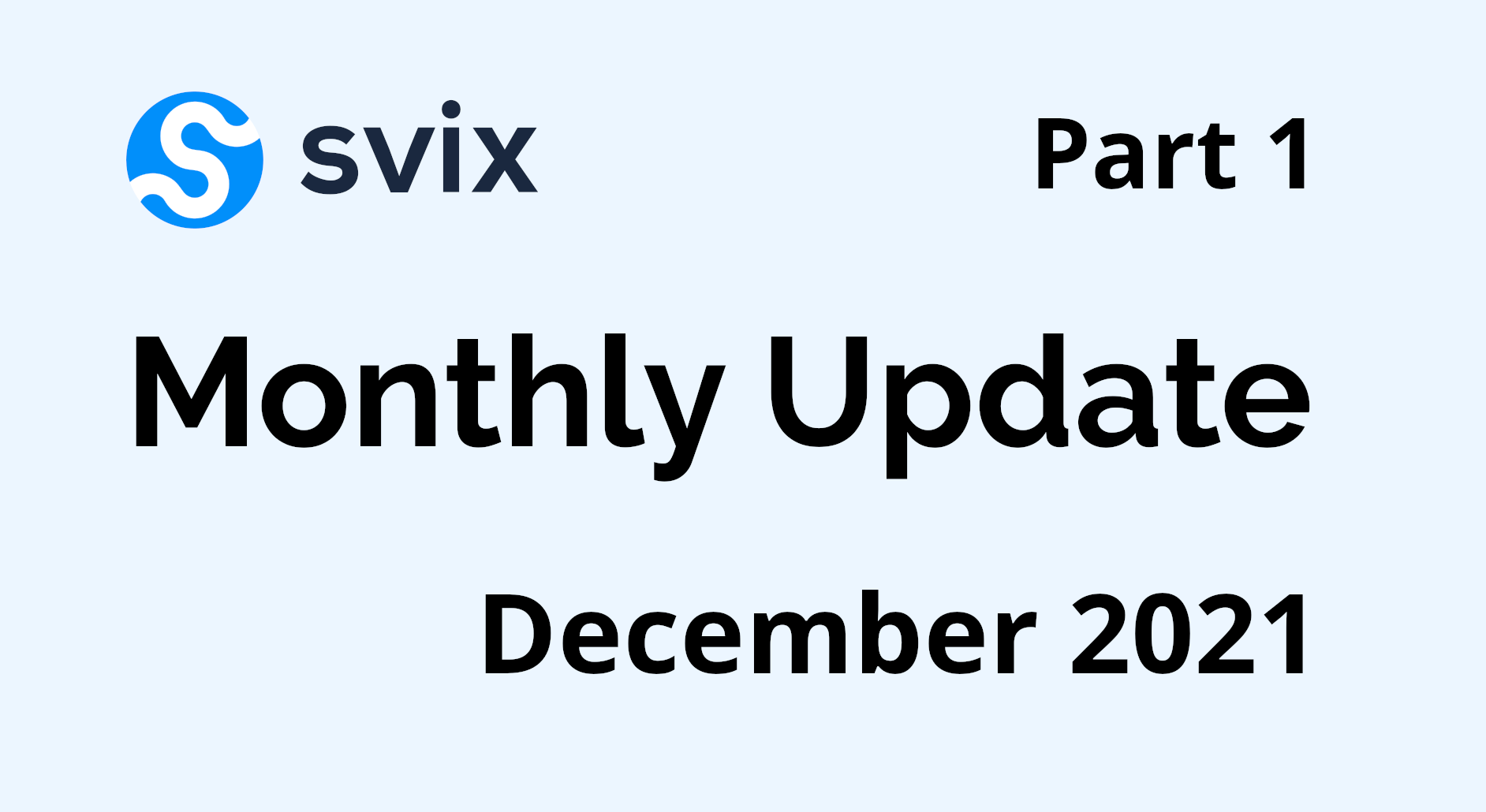
It is hard to believe that 2021 has come to an end, but it has! We have done a lot this year, and now it's time for the last mega-update of the year (well, it's already 2022, but you know...).
This update ended up being a bit long so we had to split it in two, next one coming in a few days.
New Ruby lib, automatic retries in Kotlin, and more
We have recently released our new Ruby library for interacting with the API. This is in addition to the existing one we had for verifying webhook signatures. We have also updated our Kotlin lib, which is also fairly new, to have automatic retries just like the rest of our libraries (Ruby included). This is in addition to updating all of the libs to support the latest additions to our API, as well as making the JavaScript much faster when making consecutive calls by reusing connections.
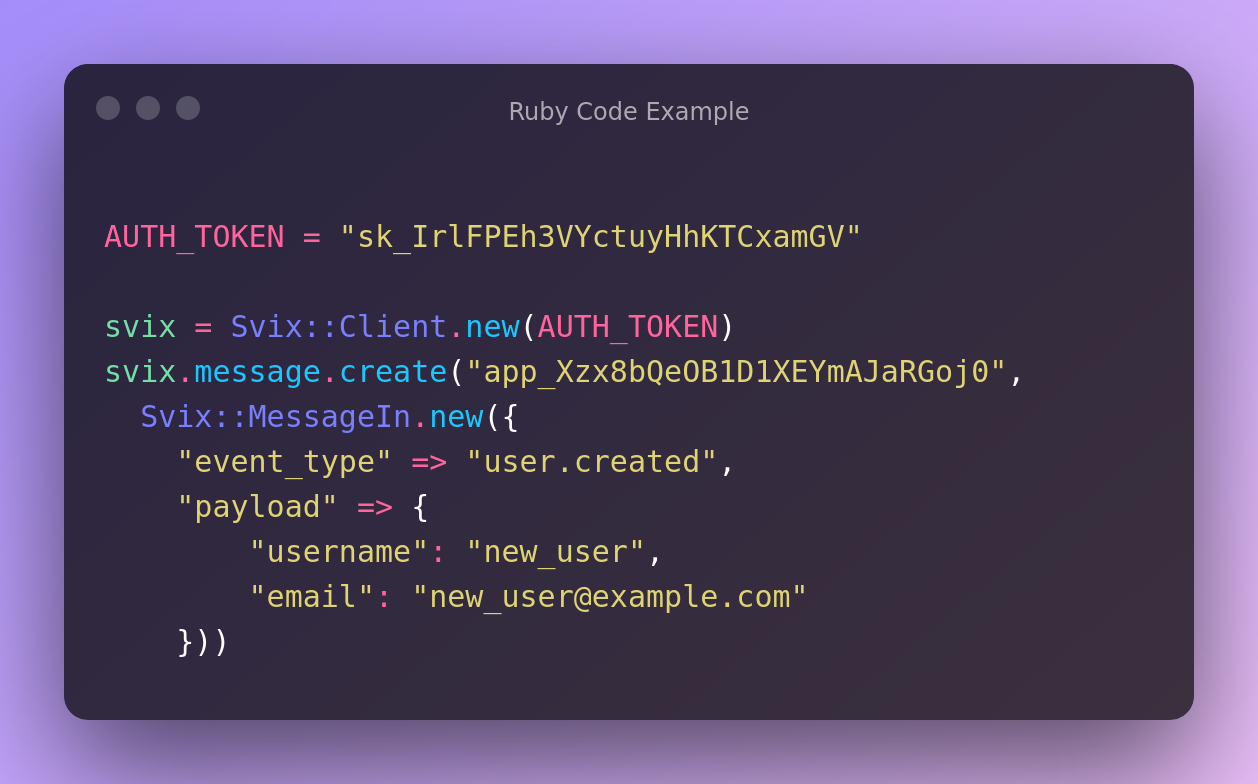
Improved Svix CLI ergonomics, especially for webhook verification
We have updated the CLI to support the latest Svix features, renamed the dashboard access functions to be consistent with the APIs, and fixed output in PowerShell on Windows.
We have also improved the verify command by adding better flag descriptions, complaining when body is missing, and showing a useful error message when verification passes, but fails due to timestamp being too old. All of which make testing your Svix integration much nicer.
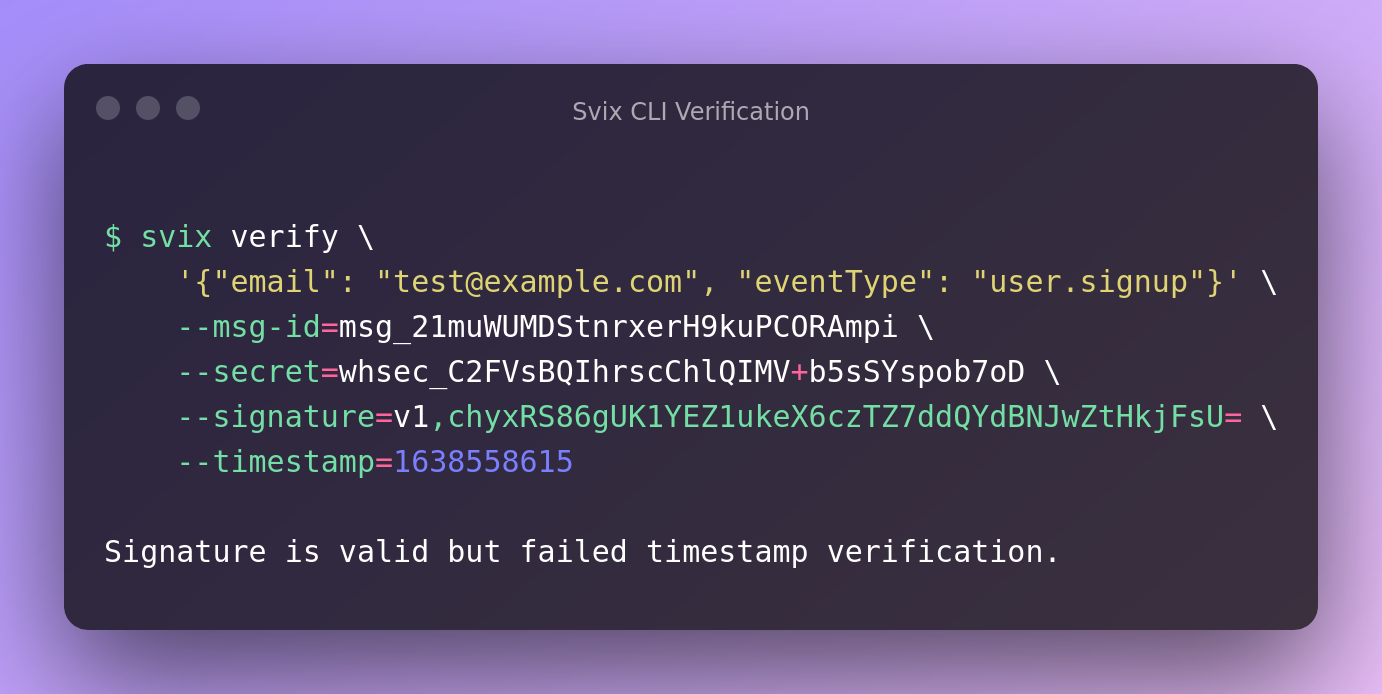
Endpoint secret rotation
Endpoint secrets are the secret key that Svix uses to symmetrically-sign webhook messages so that they can be securely verified to be authentic upon receipt. For more information, please refer to the verifying webhooks docs. We added a way both in the API and in the app portal to rotate the secret. The secret rotation works by signing the message with both the new and the existing secret (for 24 hours) in order to not interrupt delivery until the new secret is updated.
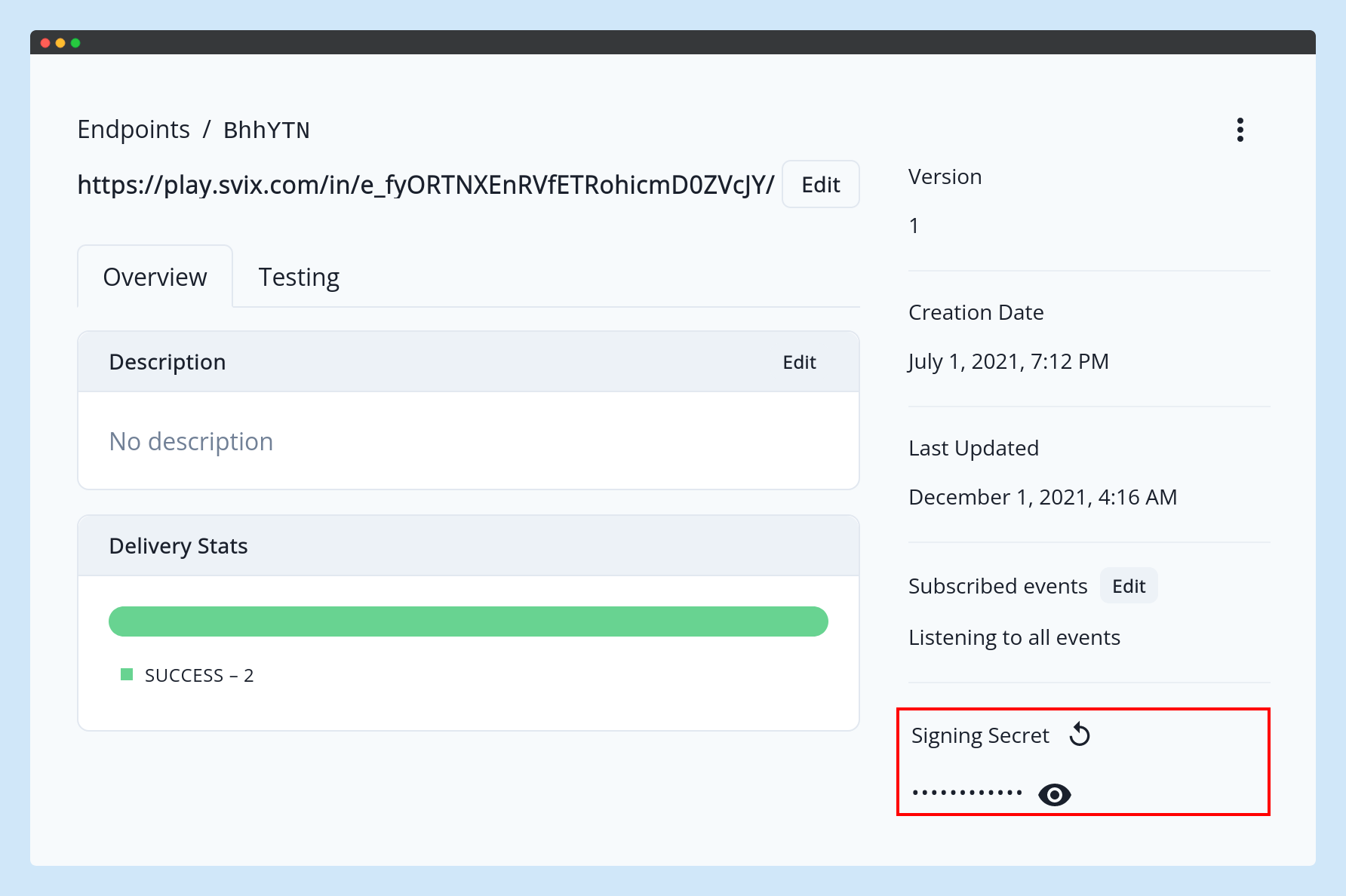
Explicitly setting endpoint secret
Svix now supports explicitly setting endpoint secrets. Before this change (and still, if not explicitly set), Svix would automatically generate the endpoint secret for you. Now you can explicitly set the secret to whatever value you want.
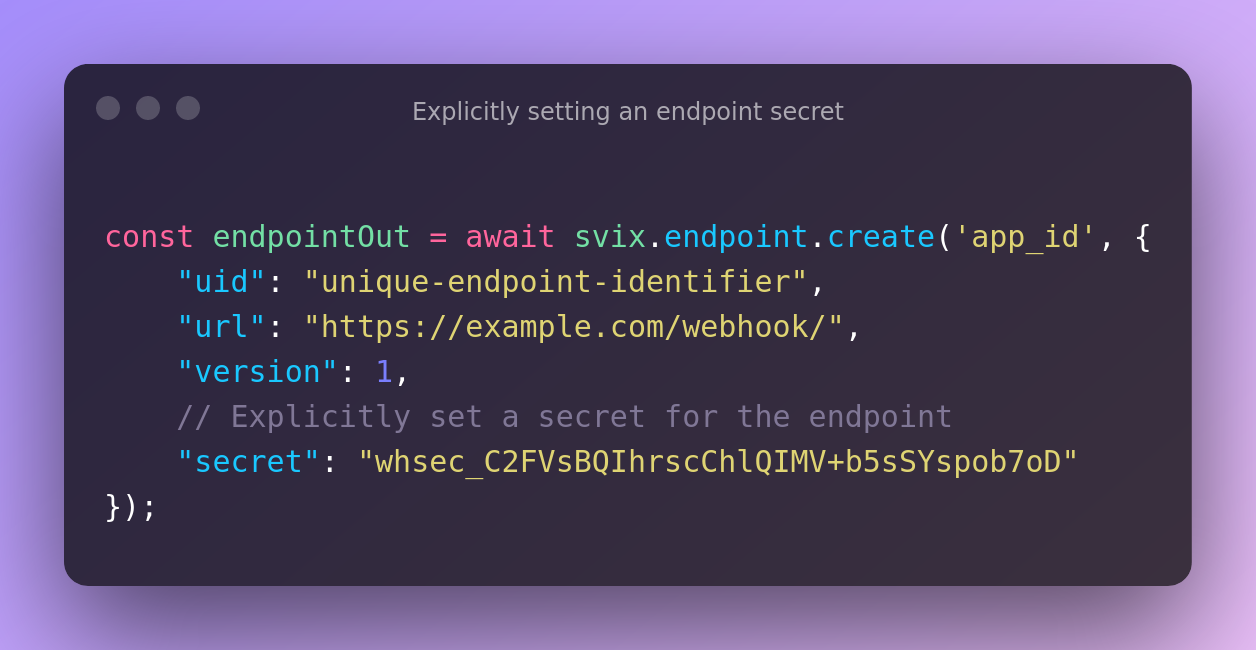
Overhauled the billing page
We overhauled the billing page on the dashboard to make it cleaner, clearer, and prettier. It's now easier to control your subscription and get full visibility into your billing.
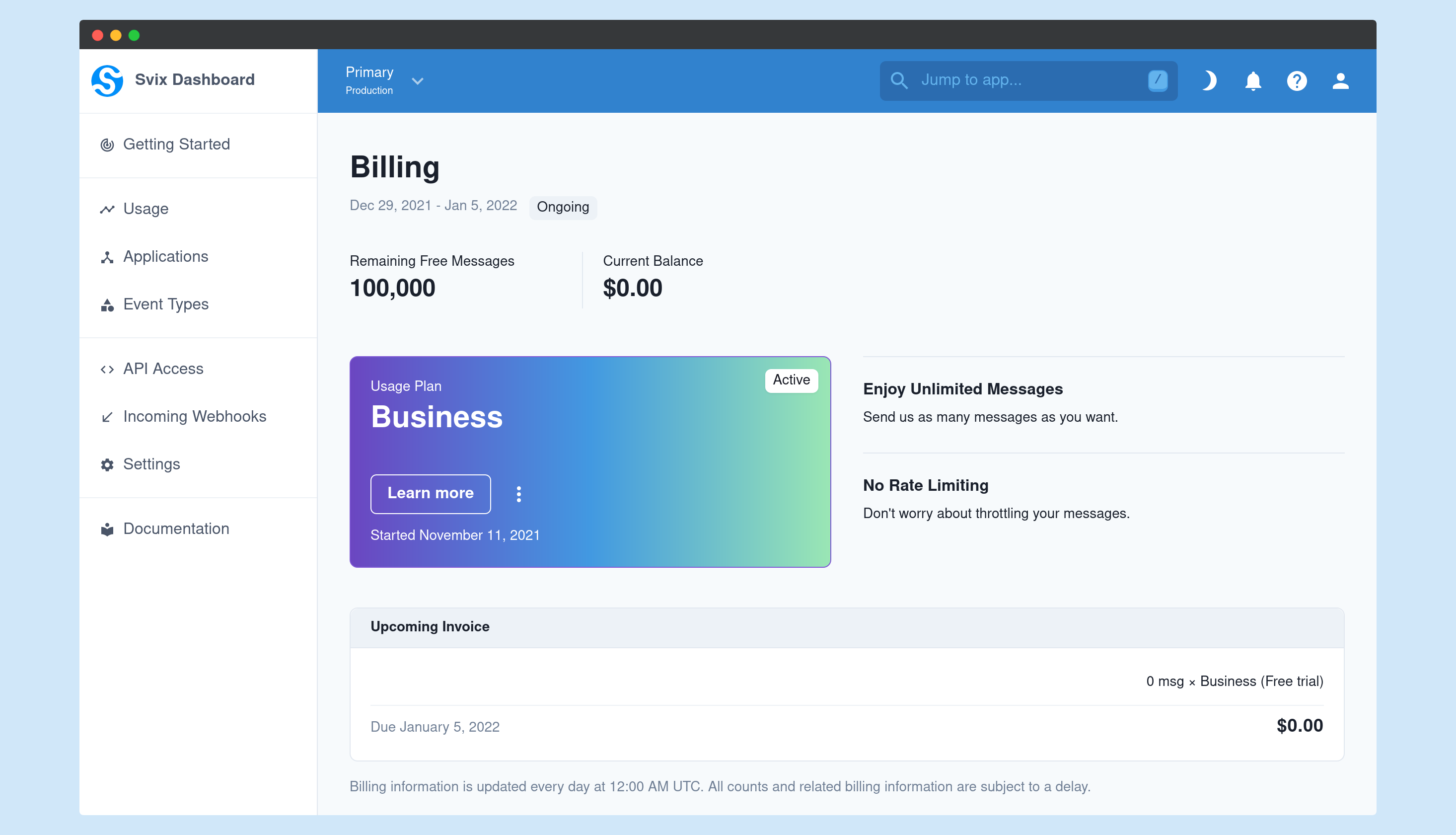
Usage and activity graphs
We have added more visibility into the account's usage and activity both in the dashboard and the application portal (including graphs!). This is only a taste of what's to come. Please let us known what stats you would like to know next.
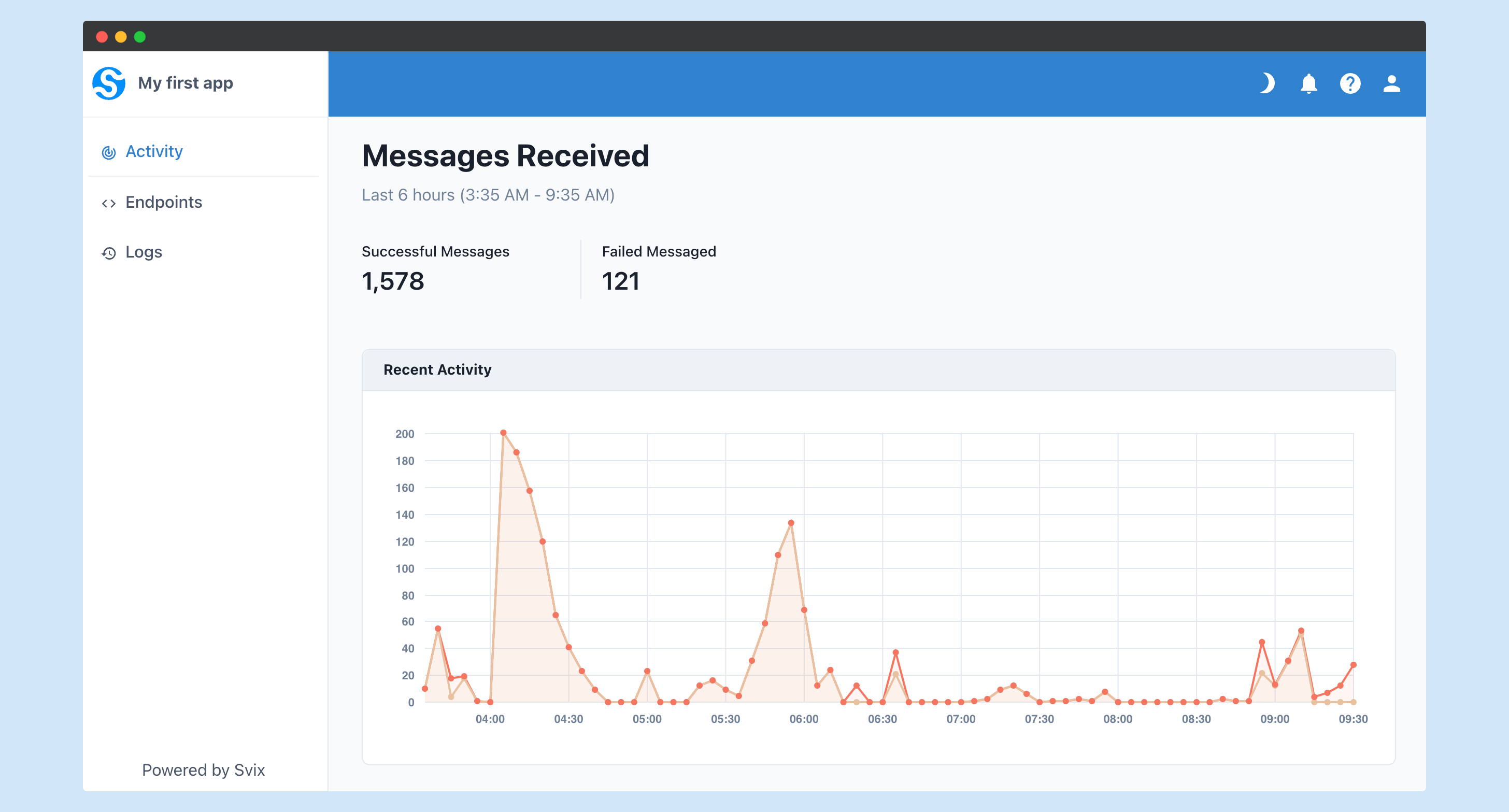
You can now set the font size of the app portal
It has always been possible to customize the color, font, and icon of the application portal, but until now it hasn't been possible to change the font size. This is a small change, but it can make the whole difference for people who have different based font-sizes than what's used in the application portal.
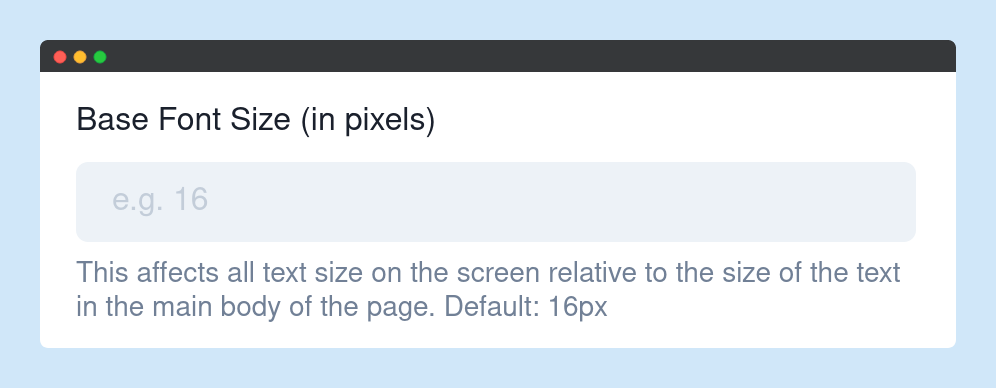
Sending example messages for event types
When you set the schemas on event types you can also set example payloads or have them automatically generated for you. Your customers can now use these examples to send test messages to their endpoints for each of the supported event types.
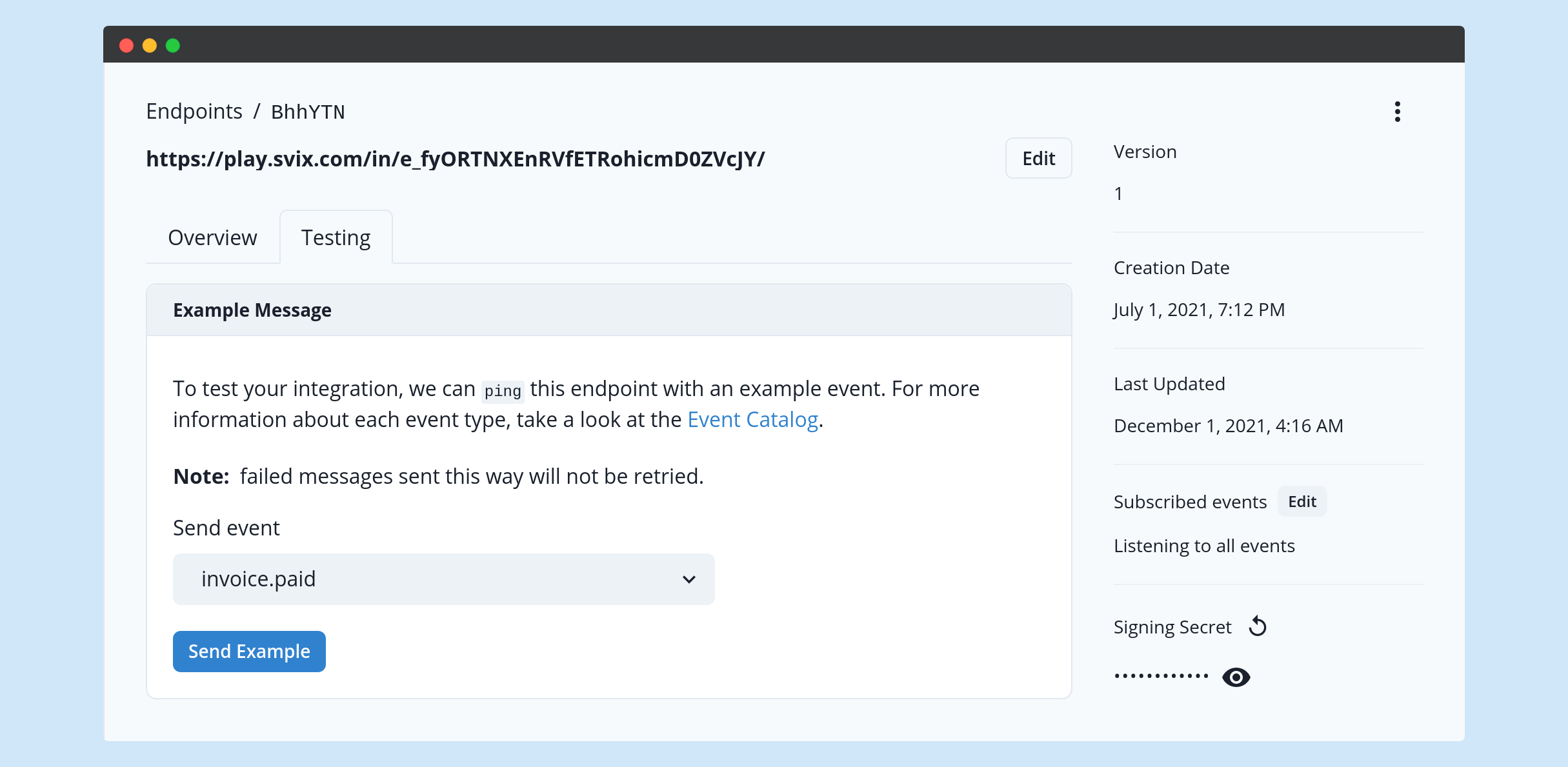
Coming next
We have a lot more in the works, and I can't wait to share what we working on! If you have any thoughts or suggestions regarding what we should work on next, please join the Svix Slack and let us know!
This is it for this update, but make sure to follow us on Twitter, Github or RSS for the latest updates for the Svix webhook provider, or join the discussion on our community Slack.